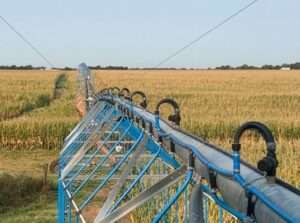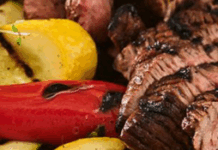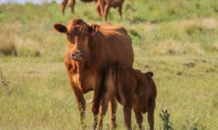The western High Plains relies on the expansive multi-state underground reservoir known as the Ogallala Aquifer to grow crops needed to feed the world.
Finding ways to stretch the water resource in the Ogallala—and other underground aquifers that dot the High Plains region—depends on a complicated system. Most notably it is the individual irrigator who determines how to stretch a finite resource.
Those who work closely with growers say stretching the resource requires constant learning and adapting to change.
Jonathan Aguilar, an Extension specialist for water resources at Kansas State University’s Southwest Research Extension Center, Garden City, has spent many hours researching water. He said there was a time when the decline of the Ogallala Aquifer was so pronounced that one of his colleagues, who had a 40-year career, had once quipped that if he listened to all the critics who predicted the premature end of irrigation, he would have been out of a job many years ago.
Aguilar said the key has been the ability for the industry to adapt. When irrigation was first started on the High Plains, water was applied with flood or surface application. Most of the surface irrigation techniques were only about 30% to 60% efficient. Since then center pivots and sprinkler irrigation systems pushed the efficiency up to 85%.
Also, different state government policies have made most growers conscientious about stretching water supplies, Aguilar said. Over time, technology has been a critical tool to help growers to manage their wells.
Today, precision ag and subsurface irrigation systems are the latest technologies in pushing efficiency close to what he hopes is a goal of nearly 100% irrigation efficiency.
Aguilar said precision techniques can improve scheduling.
“We still have rainfall,” he said. “There is no reason to irrigate when the rain is pouring. We don’t want to put water on top of water. If we have no runoff or losses we can maximize the efficiency.”
In the western High Plains, irrigation will continue to be prominent, he said, because of the industry it serves. The region is filled with large livestock feedlots and dairy operations that need forage and feed.
The idea is to help extend and conserve as much of the aquifer as possible because irrigation helps profitability for the region and agriculture drives the economy, Aguilar said. Growers in southwest Kansas also have to share water for industry and urban uses.
The recent announcement of the Hilmar Cheese Company plant that will be constructed in Dodge City, Kansas, will boost dairy operations and that will add more value to the region and will increase the need for feed to support dairies that will be providing the milk for the plant.
Producers and researchers will continue to focus on practices that are profitable, which may mean some shifts in crop practices.
“Irrigation will still be here but we need to be as good of managers as possible,” Aguilar said.
Forty years ago growers were limited to what crops they could grow and today there are more options. Improved varieties, management opportunities—both in-season and off-season—can help growers with their decisions.
Growers have also adopted strip-till and no-till practices. For some growers even a well at 150 gallons a minute can provide an opportunity to irrigate a crop.
“It all goes back to economics,” he said. “Can the farmer make money at this reduced well capacity?” Studies by K-State Research and Extension have shown that an inch of water at the critical stage could double corn yield compared to dryland.
Growers can also look at crop rotation not only to conserve water but as a tool for weed suppression. Producers may be able to integrate livestock grazing as a way to make their operation be more profitable.
As irrigation gets more sophisticated and precise, growers should look at ways to improve the performance of their pivots.
“If you don’t need to irrigate you are actually saving energy costs,” Aguilar said. “You need to be on the top of your schedule. One thing we should look at is minimizing use of irrigation water by capitalizing on the rain and holding off as long as possible.”
While Mother Nature is unpredictable, being able to pinpoint when rain is in the forecast and knowing how much rain fell on the field can help the irrigator shut down the system, which saves energy and water.
From a maintenance standpoint Aguilar has found about 50% of irrigation systems need adjustments that could help improve their efficiency. Growers need to look at adjustments like gear ratios on the pumping system, water pressure and also the motor itself.
Upgrading sprinkler heads and paying attention to pivot telemetry can significantly increase efficiency, he said.
He has also been impressed with companies such as Dragon-Line, Ulysses, Kansas, which allows the grower to literally apply water right onto the crop. There are other companies that offer similar systems with same concepts and growers should explore them.
The systems do have learning curves but can be well worth the management time.
Aguilar said one piece of advice to irrigators is to invest in water saving measures as quickly as they can. “Don’t wait until your well drops to 150 gallons a minute. Right now, it may be hard to justify the investment in the short run but over the long term it does work out.”
The end game starts at the beginning with a holistic approach.
“Irrigation engineers are not alone in looking at ways to improve system efficiency and increase the value of water. It also includes management of crop varieties and management of weeds. There are many aspects that have to come together to make irrigators be more efficient. With irrigation technology we can get to 98% efficiency, but we are hoping for more.”
Even fertilizer management programs needs to be addressed rather than just depending on increasing irrigation alone to boost yield, he said. “It all depends on the farmer and how he operates the system and how he integrates it all will make the difference.”





